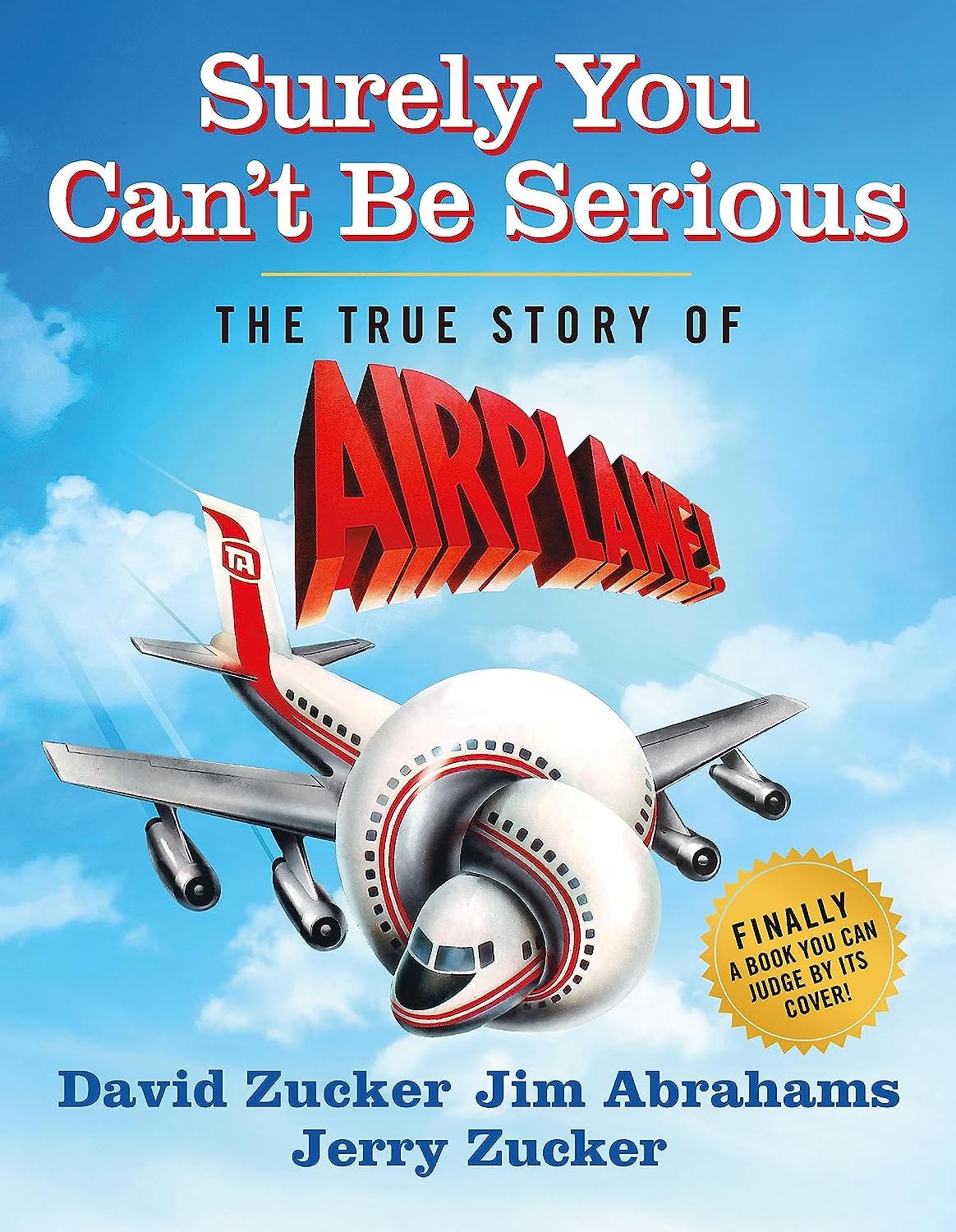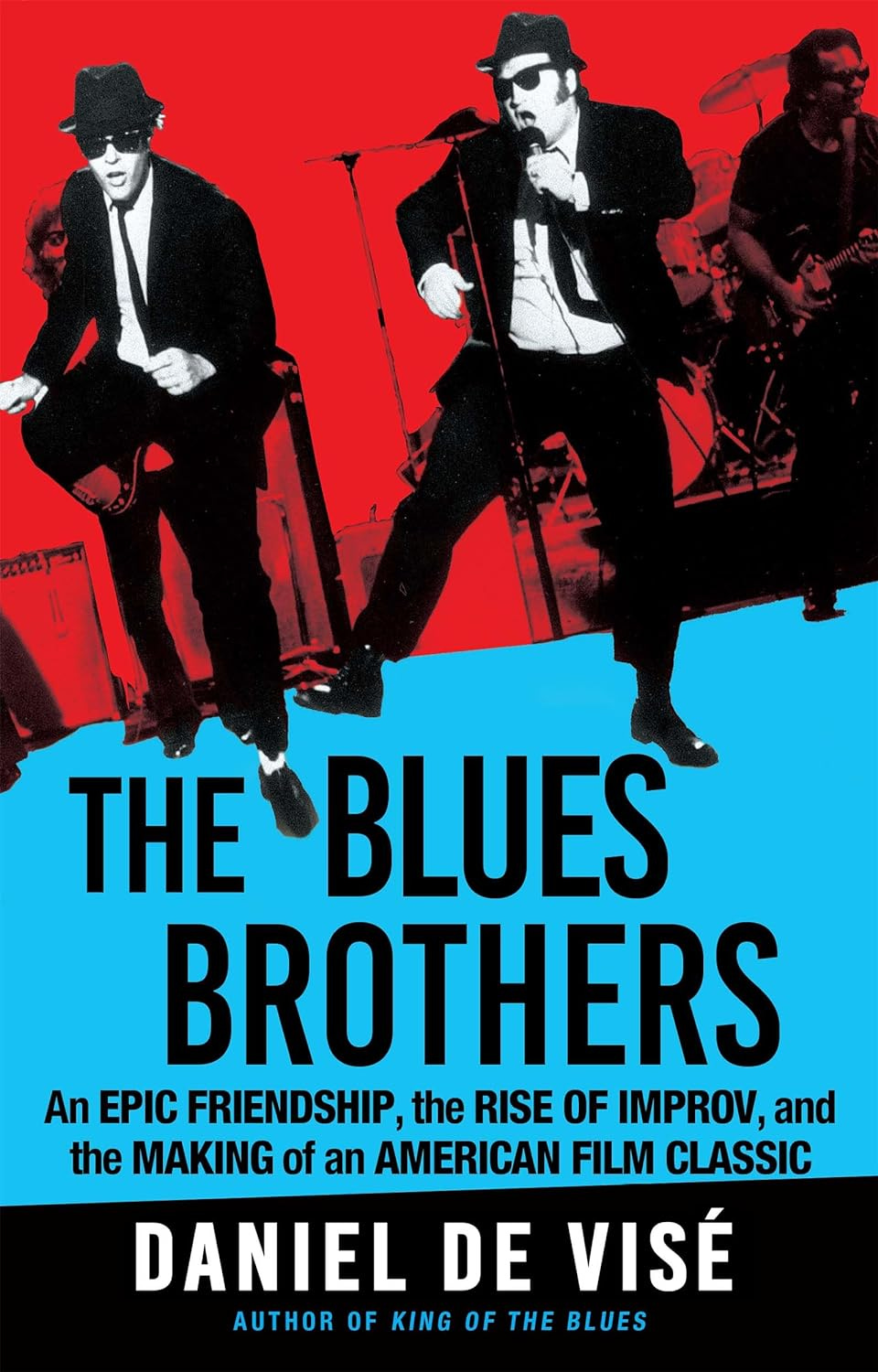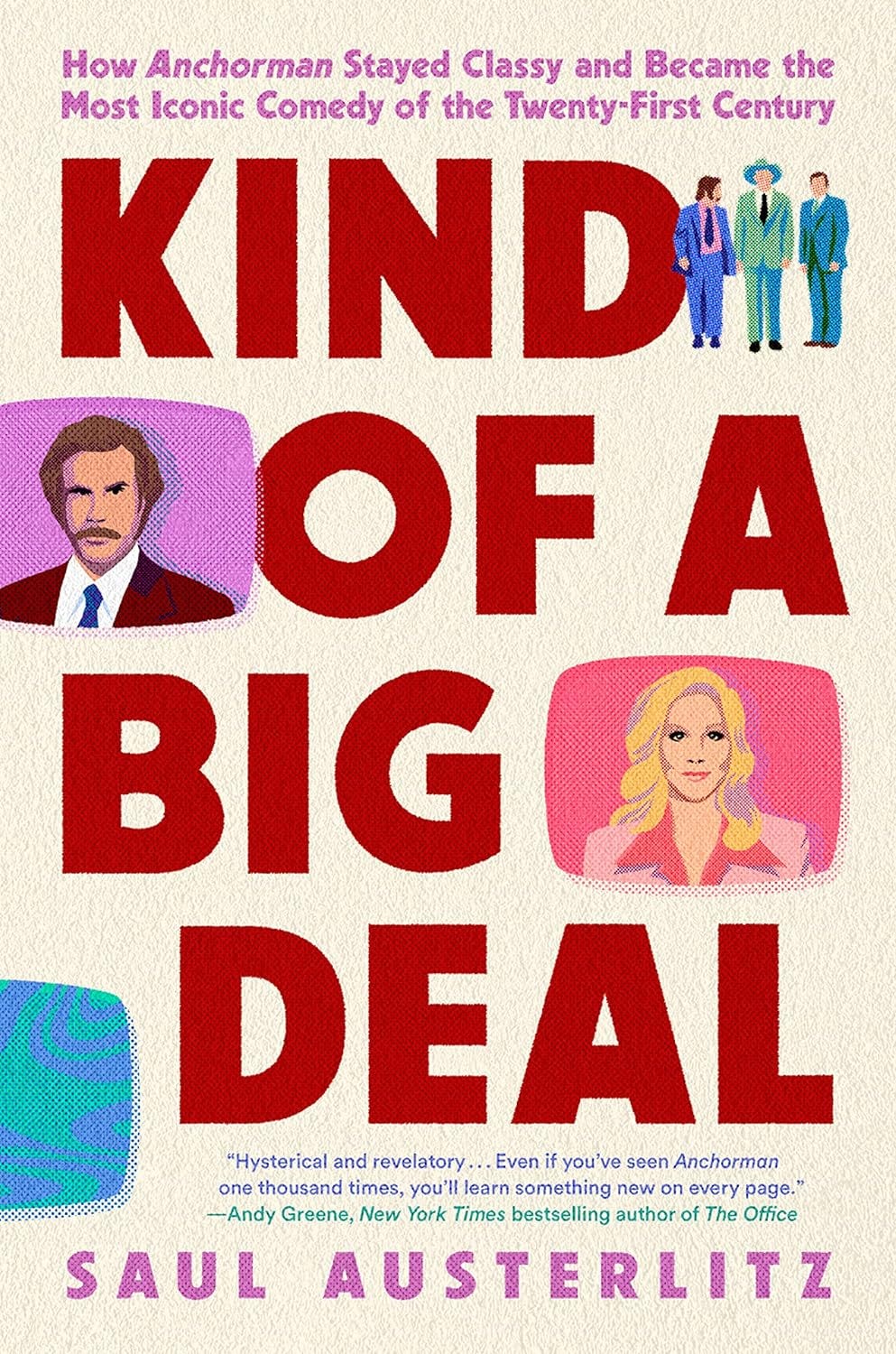I always want comedy to receive equal time. There are two theatrical masks, after all, but we all know you get the real attention when you don the face of tragedy. One reason I’ve never been a fan of Method acting is that it seldom seems to translate to comedy. Consider the Criterion Channel’s recent salute to the Method; not a lot of laughs in that lineup. Many Method actors—Gene Hackman and Dustin Hoffman, for instance—also have extensive improv backgrounds. It eventually dawned on me after my own limited exposure to the form that improv is the Method’s comic twin, an approach to performance that draws on the interiority of the performer.
Lighter fare also gets short shrift in the burgeoning genre of the deep dive into a single film. Among the movies that have recently received their own biographies are High Noon, Chinatown, and Goodfellas. Every last one of them dramas when, again: two masks. Three new books seek to balance the scales, going long on landmark comedies that share some DNA.
Surely You Can’t Be Serious: The True Story of Airplane! is the rarity in that it was written by the filmmakers themselves: the troika of David Zucker, Jim Abrahams, and Jerry Zucker, forever shorthanded as ZAZ. Rarer still, it’s a book about a laugh-out-loud movie that is itself funny. The byplay between the three principals still crackles as they recount how a group of Midwestern comics with no showbiz connections not only broke in but made a groundbreaking film. They created their own opportunity via improv, starting the Kentucky Fried Theater in Wisconsin then moving it to Los Angeles. (David Zucker explicitly states that “almost none of [Airplane!] was improvised. Everything was written into the script.”) The Hollywood of the late 1970s and early ‘80s was more open to taking risks, several of which were posed by this project: a triple-headed hydra of directors, riffing on an existing movie (1957’s deadly serious Zero Hour!, from which the boys poached the basic plot and the exclamation point), using a cast of actors primarily known for playing it straight.
The last point provided plenty of confusion during production—Abrahams explains how Lloyd Bridges worked himself into a frenzy because “he was looking for his character and there was none”—and contributed mightily to its impact. ZAZ’s story is supplemented by quotes from many of Airplane!’s stars and production staff, as well as fans like Bill Hader and filmmaker Adam McKay who explain how influential the movie was and continues to be. McKay says:
When I was at Saturday Night Live, we utilized the Zucker-Abrahams-Zucker formula anytime we had older, high-status White dudes on the show hosting, and especially when they weren’t really actors … (they) were the easiest to write comedy for, because they just could fall a lot further, and it was so fun to hear them say crazy, crazy things.
Airplane! and The Blues Brothers opened only weeks apart during the summer of 1980. The latter film was directed by John Landis, who worked with ZAZ on The Kentucky Fried Movie (1977). Jake and Elwood Blues first appeared on Saturday Night Live, produced by Lorne Michaels, who had pitched NBC a show “with the same sensibilities as the Kentucky Fried Theater.” The movies were already linked, so the books about them might as well be.
Daniel de Visé’s The Blues Brothers: An Epic Friendship, the Rise of Improv, and the Making of an American Film Classic (coming in March 2024) can’t quite deliver on all it promises, but that’s not the author’s fault. Any chronicle of the relationship between John Belushi and Dan Aykroyd will always tilt toward the former, which is exactly how Aykroyd would prefer it: “Dan was half as famous as his partner. He liked it that way.” Aykroyd still comes across as the glue of their SNL years and the prime mover behind their greatest silver screen collaboration.
Spotlighting The Blues Brothers allows De Visé to touch on multiple topics simultaneously: the exploding Second City comedy scene, the rise of Hollywood’s blockbuster culture, the overlap and eventual competition between SNL and National Lampoon. It takes a while to get to the movie’s production, but De Visé’s thoroughness makes it worth the wait. He’s particularly strong on the film’s look—Dick Tracy the comic strip would be an unlikely influence—and the challenges of shooting in Chicago; producer Robert K. Weiss (another regular ZAZ collaborator) describes being given the private line of powerful attorney and fixer Sidney Korshak with strict instructions: “If you ever have a real problem in Chicago, call this number. But if you call it, make sure you’ve got a problem.” De Visé answers a question I’ve always had, namely why wasn’t Paul Shaffer, so integral to the Blues Brothers’s sound and their SNL performances, in the movie? Blame the jealousies then plaguing the SNL set. Shaffer’s decision to remain loyal to a Gilda Radner project led to him being replaced by, in Weiss’s words, “three or four people” including actor/keyboardist Murphy Dunne. Shaffer would return for the band’s national tour.
Considerable space is deservedly devoted to the movie’s music, which triggered a backlash in some quarters. As De Visé writes, “Racist theater owners said The Blues Brothers was too Black. Hipster journalists said the band was too white.” Landis explicitly states that “One of our intentions with this picture was to kill off disco.” The studio lobbied to replace Aretha Franklin with Car Wash band Rose Royce. Landis and company would have the last laugh, as the movie revived the careers of many of the R&B artists celebrated in it.
The Blues Brothers’s budget and the behavior of its star spiraled out of control simultaneously, and De Visé records every excess. Belushi’s incandescent work on SNL made him a legend, yet it’s this film, with its surprising staying power, that has become his greatest legacy. De Visé does the subject justice.
The Airplane! book was written by the filmmakers. De Visé relies on meticulous research. Saul Austerlitz conducted dozens of interviews when writing Kind of a Big Deal: How Anchorman Stayed Classy and Became the Most Iconic Comedy of the Twenty-First Century, including with Will Ferrell and his co-writer/director Adam McKay, but you’d never know it. Austerlitz, who teaches Writing About American Comedy at NYU, adopts a quasi-academic tone, like an associate professor determined to prove how hip he is. Consequently, we never hear directly from the brain trust behind the 2004 film; McKay is quoted more often in Surely You Can’t Be Serious. Although, to be fair, we do get a priceless piece of McKay wisdom, passed on secondhand by sound designer Mark Mangini: “A fart is a solemn comedy weapon.”
Whether you buy Austerlitz’s contention about Anchorman’s status—Talladega Nights is my personal Ferrell/McKay ride or die—there’s no denying the movie’s significance in ushering in the current improv-driven style of comedy. But aside from some interesting material on the development of the script, only one chapter in Kind of a Big Deal truly takes flight, delving into McKay’s directorial approach of encouraging his cast to “let the squirrel out of the bag” with “alt” takes. There’s some fascinating trivia, like James Spader’s weird dalliance with the role of Brick Tamland, eventually played by Steve Carell, and the occasional sharp insight like Austerlitz’s explanation of how The Big Short (2015), easily McKay’s best film, is of a piece with the rest of his oeuvre: “This is yet another story about the private language of men—their rivalries, confessions, insecurities, and fears—except here with the health and well-being of 330 million people riding on their dialogue.”
Otherwise, the book is repetitive—Austerlitz seems astounded that character names change as a script is revised—and digressive, closing with a half-hearted exploration of the critique that Anchorman and other titles from the “Frat Pack” school of filmmakers are about the stunted emotional state of the American male, along with the exhortation that “If we want to protect comedy, we must protect democracy.” Such hyperbole frequently drifts across Austerlitz’s arguments like clouds of Sex Panther. He compares Ron Burgundy to Falstaff, invoking the work of his former instructor Harold Bloom in the process. He adds the character to a pantheon that includes Tony Soprano, Harry Potter, and Neo, suggesting that San Diego’s finest newsman “is a character who has taken on the dimensions of an archetype, an instantly recognizable holy buffoon … Ron Burgundy is an emblem, a demonstration of the ways in which stories can return us to ourselves bigger, bolder, and more charismatic than we might ever otherwise be.” Class dismissed, Professor. Pour yourself a glass of Scotch.
What (Else) I’m Reading
Do not miss Ethan Iverson’s fantastic cover story in the current issue of The Nation on the legacy of Louis Armstrong.




